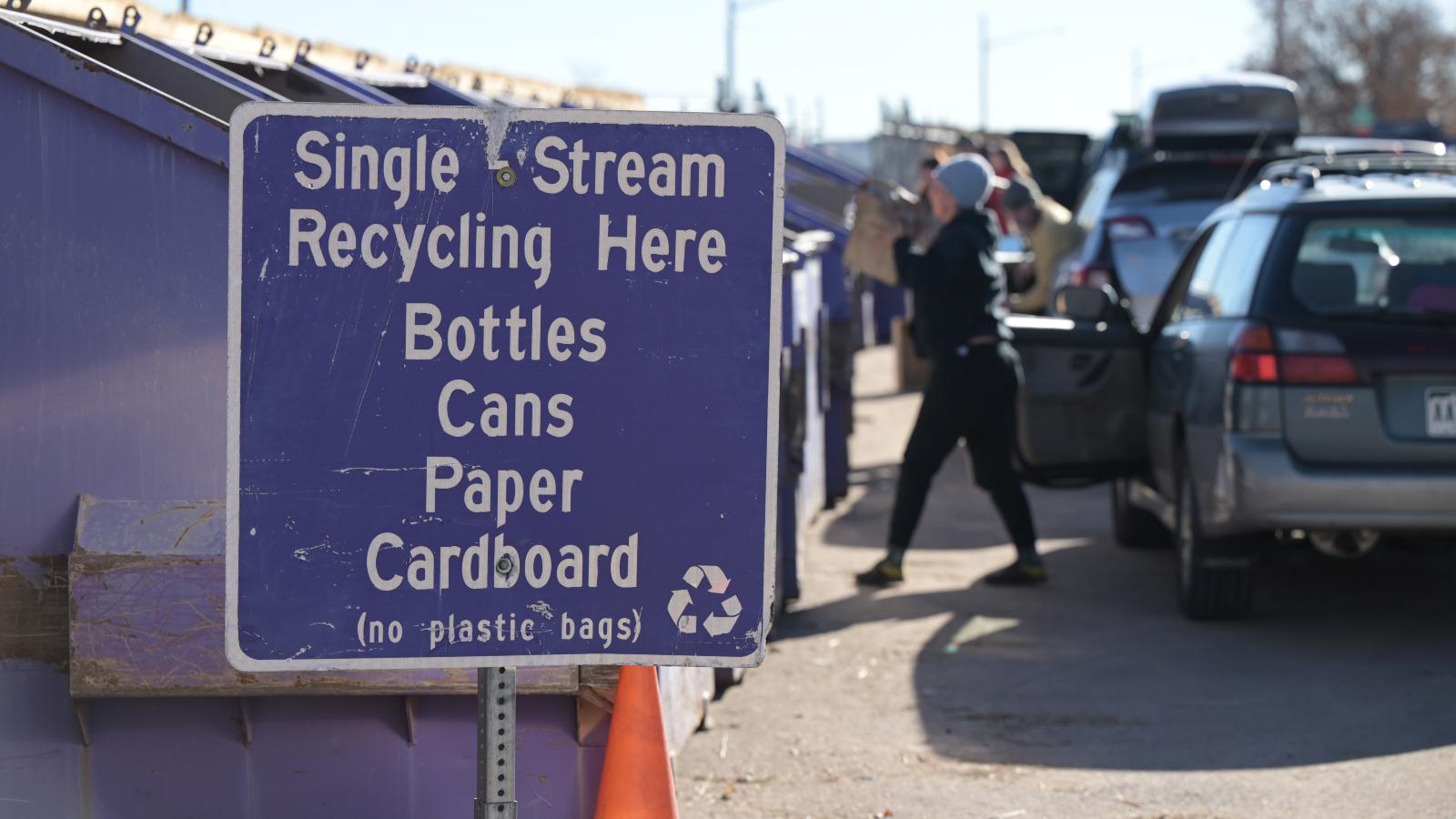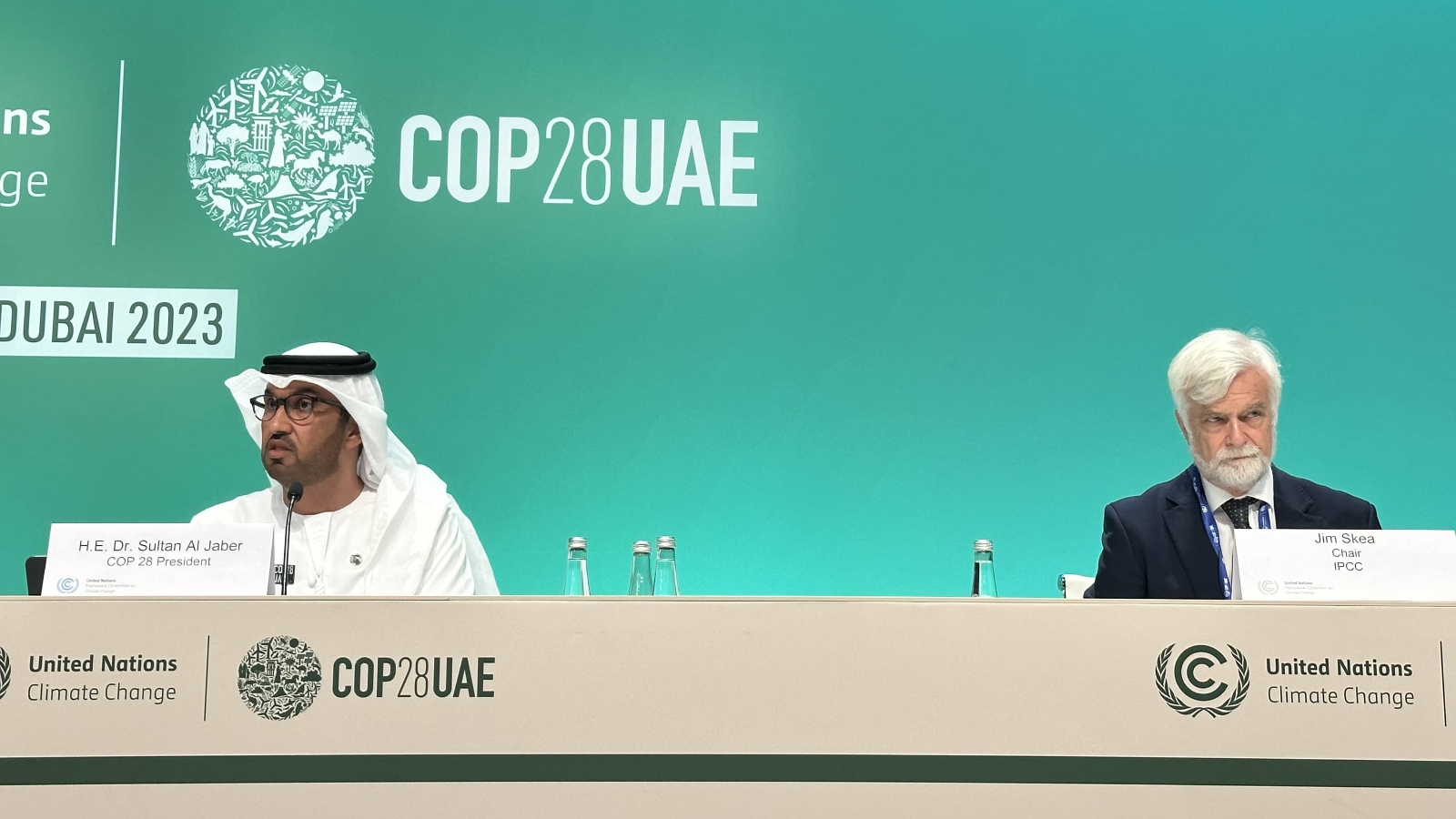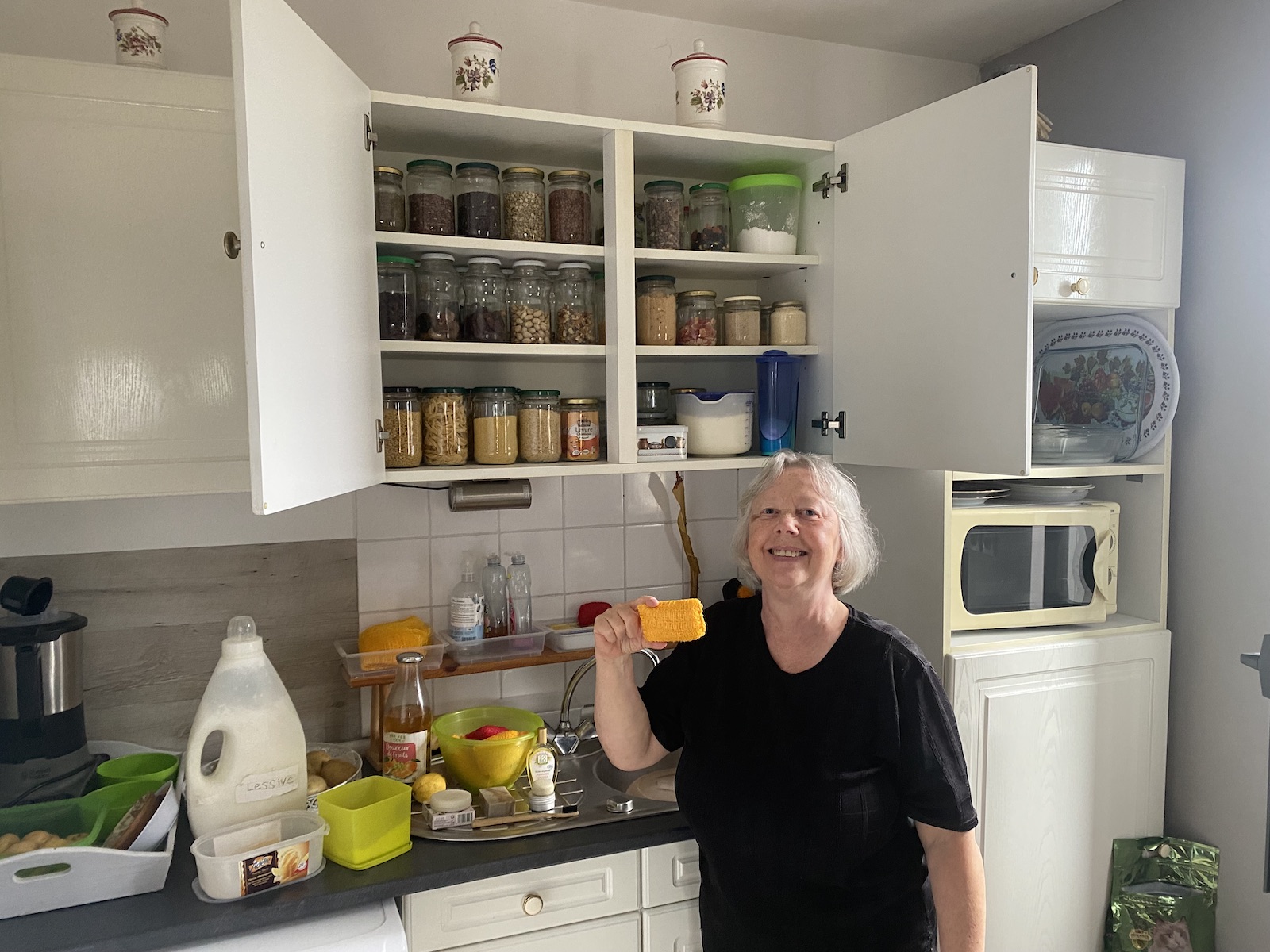
This story is co-published with The Guardian and supported by The Heinrich Böll Foundation.
Andrée Nieuwjaer, a 67-year-old resident of Roubaix, France, is what one might call a frugal shopper. In fact, her fridge is full of produce that she got for free. Over the summer, she ate peaches, plums, carrots, zucchinis, turnips, endives — all manner of fruits and vegetables that local grocers didn’t want to sell, whether because of some aesthetic imperfection or because they were slightly overripe.
What Nieuwjaer couldn’t eat right away, she preserved — as fig marmalade, apricot jam, pickles. Reaching into the depths of her refrigerator in September, past a jar of diced beets that she’d preserved in vinegar, she tapped a container of chopped pineapple whose shelf life she’d extended with lemon juice: “It’ll last all month!” she exclaimed. Just a few inches away, two loaves of bread that a nearby school was going to get rid of lay in a glass baking dish, reconstituted as bread pudding. A third loaf was in a jar in the cupboard, transformed into bread crumbs that Nieuwjaer planned to sprinkle on a veggie casserole.
With everything she’d stocked up, Nieuwjaer was all set on groceries for the next few months. “I’m going to eat for free all winter,” she said in French, beaming.

Nieuwjaer is part of a worldwide movement known in French as zéro déchet, or zero-waste. The central idea is simple: Stop generating so much garbage, and reap the many intertwined social, economic, and environmental benefits. Rescuing trash-bound produce, for example, stops food waste that can release potent greenhouse gases in a landfill. Making your own shampoo, deodorant, and other beauty products reduces the need for disposable plastic bottles — plus, it tends to use safer ingredients, meaning less danger for fish and other wildlife.
But Nieuwjaer didn’t just one day decide to join the movement; she was drawn into it as part of a local government experiment in waste management. In 2015, the city of Roubaix launched a campaign to reduce litter by teaching 100 families — including Nieuwjaer’s — strategies for cutting their waste in half. Similar efforts may soon be repeated across France as cities and regions begin striving to meet (and exceed) the country’s ambitious waste-reduction goals. At the heart of their efforts is a fundamental question: How do you get citizens to change their behavior?
Most Americans know France as the land of fine wines and cheese. But among a more niche audience, the country is also known as a zero-waste leader. Besides producing one of the world’s most famous zero-waste influencers, Bea Johnson — the “priestess of waste-free living,” according to the New York Times — France has passed some of the developed world’s most ambitious waste-reduction policies. It was the first country in the world to ban supermarkets from throwing away unsold food, and one of the first to enshrine “extended producer responsibility” into law, making big polluters financially responsible for the waste they create, even after their items are sold.
In 2020, France passed a landmark anti-waste law that laid out dozens of objectives for waste prevention, recycling, and repairability, including a national goal to eliminate single-use plastic by 2040. The law banned clothing companies from destroying unsold merchandise, required all public buildings to install water fountains, and proposed “repairability index” labels for certain electronic products. At the time, the law was praised as “groundbreaking,” and several of its provisions were hailed as the first of their kind.
According to France’s waste prevention action plan for 2021 to 2027, finalized in March by the administration of President Emmanuel Macron, cutting waste will yield myriad co-benefits, from boosting biodiversity and improving food systems to mitigating climate change. One estimate from the nonprofit Global Alliance for Incinerator Alternatives says that a comprehensive zero-waste strategy that includes better material sorting, more recycling, and source reduction — in essence, producing fewer unnecessary things — could reduce waste-sector greenhouse emissions by 84 percent globally.
Achieving all these benefits, however, will require more than proclamations from Paris. According to France’s Ministry of Ecological Transition, the national anti-waste plan is meant to filter down through the levels of government before ultimately manifesting at the local level. The national plan requires regions to develop their own sub-plans, and asks small-scale waste management authorities to “enable the implementation” of France’s bigger-picture waste agenda.

Really, though, the transformation envisioned by France’s zero-waste advocates requires even more granular action — from boutiques, from supermarkets, from restaurants. Keep peeling back the layers and you end up with individual people like Nieuwjaer, who must be nudged, incentivized, or told to change their behavior to accommodate waste reduction — even if they’re not all as enthusiastic as she is. As the country’s 2021 to 2027 action plan says, “Reducing our waste requires everyone,” suggesting that an all-encompassing culture shift will be needed to achieve the national government’s goals.
This is the task that many French cities and waste collection authorities are now confronting — how to change individual people’s behavior so that it conforms with France’s vision for waste reduction. Some of the most ambitious places have become incubators: notably Roubaix, whose voluntary, education-based approach has drawn international attention. Last year, the European Commission named Roubaix as one of the top 12 places in the European Union with the greatest potential for “circularity,” a term referring to systems that conserve resources and minimize waste generation.
There’s also the Nouvelle-Aquitaine region north of Bordeaux, where a regional waste management authority called Smicval is experimenting with more structural interventions like moving garbage bins and charging people differently for waste collection. Pauline Debrabandere, a program manager for the nonprofit Zero Waste France, called Smicval one of the country’s “biggest pioneers.”
The projects illustrate the need for complex behavior-change strategies that both educate people and alter the social and environmental contexts in which they make their decisions. And they hold lessons for communities across the globe looking to implement their own waste-reduction programs. Debrabandere put it this way: While you need rules and incentives to “create the conditions” for waste reduction, you also need to convey its benefits and ensure widespread participation. “You have to raise awareness.”
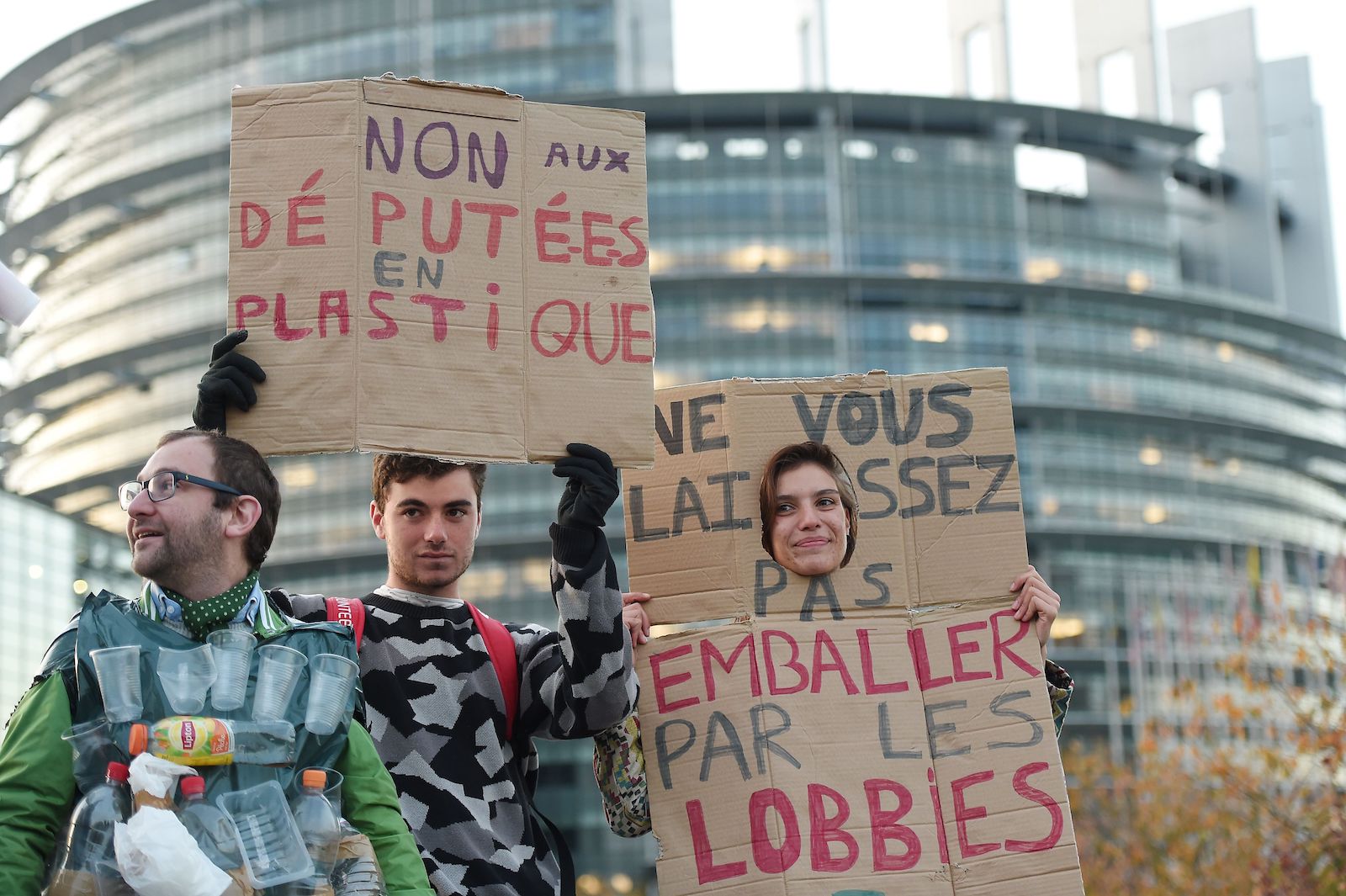
When Alexandre Garcin dreamed up Roubaix Zéro Déchet — French for “Zero-Waste Roubaix” — as a candidate for city councilor in 2014, it wasn’t so much sustainability that inspired his vision; it was cleanliness. Roubaix’s litter problem was top of mind for everyone that year, and Garcin’s big idea was to address it through waste reduction. Rather than cleaning up more and more trash off the city’s streets, why not produce less garbage in the first place?
This was easier said than done. Roubaix is a famously poor, postindustrial city that belongs to the Métropole de Lille, a network of communities organized around the major city of Lille in northern France. This superstructure coordinates infrastructure that crosses town lines, such as public transit and waste management. According to Garcin, the métropole wasn’t interested in funding and implementing his zero-waste initiatives. To cut down on waste generation, Roubaix would have to get creative — by asking residents to volunteer.

Once he was in office, Garcin mailed leaflets to Roubaix residents seeking 100 volunteers to participate in a free, yearlong pilot program that would teach them how to live waste-free — or, at least with less waste than usual. These familles zéro déchet, or zero-waste families, would receive training and attend workshops on topics like making your own yogurt and cleaning with homemade products, with the goal of halving their waste by year’s end. Volunteers weren’t offered any direct financial incentives to participate — only the promise of helping solve the litter problem and protecting the environment. Using a luggage scale — a “really, really, really important” part of the program, according to Garcin — they would periodically weigh their weekly trash and report it back to the city.
The luggage scale forced people to recognize the impact, and literal weight, of their consumption choices, Garcin explained. “Physically, you have the sense of how heavy it is.”
The program Garcin designed exemplified what behavioral scientists call an “information-based” approach to change, which builds understanding and awareness through unambiguous instructions, forums, meetings, trainings, and feedback. Philipe Bujold, behavioral science manager for the international environmental nonprofit Rare, described this as a “tell them” strategy, in contrast with other tactics to induce behavior change, including through incentives (“pay them”) or rules and prohibitions (“stop them”). Josh Wright, executive director of the behavioral science consulting firm Ideas42, also lauded Roubaix Zéro Déchet for creating an identity around zero-waste and assigning families quantitative waste-reduction targets — strategies that have proven to be effective in other contexts.

Much of what Roubaix told residents to do was actually pretty straightforward — for example, “don’t buy more food than you can eat.” But that was kind of the point. According to Garcin, it’s actually “not that difficult” to halve a household’s waste production. Composting alone is enough to get you most of the way there, since organic waste makes up about a third of the average French family’s municipal waste by weight. Another third is glass and metal, a significant chunk of which can likely be kept out of the landfill through recycling, and 10 percent is plastic, much of which can be avoided by finding reusable alternatives to plastic grocery bags, cutlery, packaging, and other single-use items. According to the United Nations Environment Programme, half of all the plastic produced worldwide is designed to be used just once and then thrown away.
“The idea was to help everyone change his consumption at the place where he’s ready,” Garcin explained, whether that meant eating fewer takeout meals or switching to homemade laundry detergent. Through these minor lifestyle changes, the earliest participants in Roubaix Zéro Déchet’s family program saved an average of 1,000 euros (about $1,100) per year, according to Garcin. Seventy percent of them cut their waste generation by 50 percent, and one-quarter reduced it by more than 80 percent.
Of course, some participants embraced zero-waste more enthusiastically than others and therefore reaped even greater rewards. Nieuwjaer, for example, would eventually cut her landfill-bound waste by so much that nine months’ worth would fit on her kitchen scale. All told, Nieuwjaer says she saves about 3,000 euros a year because of her zero-waste habits.
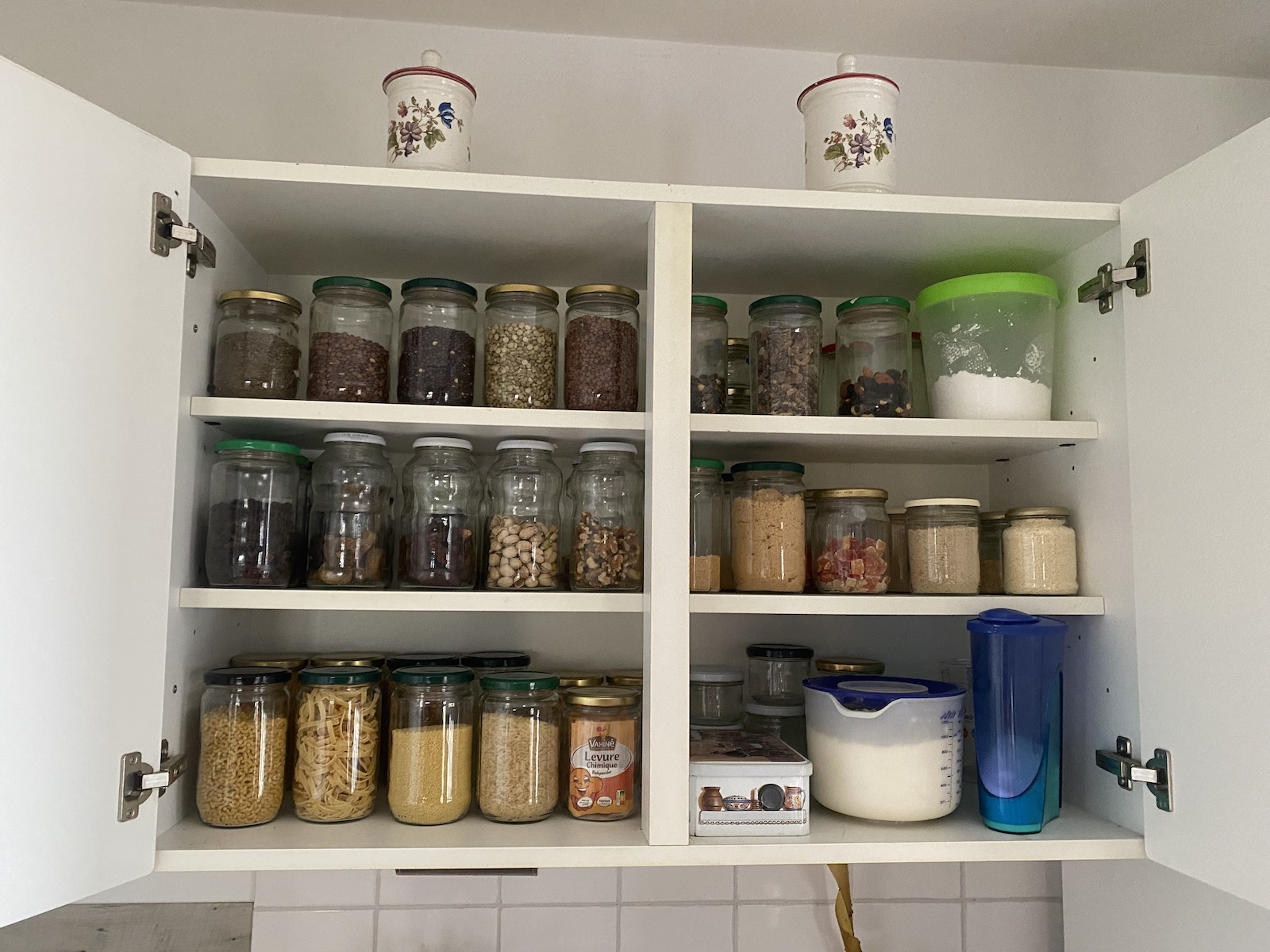
One drawback of an information-based strategy for behavior change, however, is that it tends to have limited reach while working very well on a small slice of the population — the “pioneers,” as Garcin called them, in this case referring to people who are exceptionally attentive to their health, environmental footprint, or personal finances. Since 2015, many of Roubaix Zéro Déchet’s most enthusiastic participants have been those who were already interested in wasting less, even before they heard about the program.
Amber Ogborn, for example — an American who moved to Roubaix with her family in 2012 — said her decision to sign up as a famille zéro déchet in 2019 was influenced by a trip to a waste incinerator, where she saw garbage trucks unloading a “mountain of trash” to be burned. Ogborn is now all-in on zero-waste, thanks in large part to training she received from Roubaix Zéro Déchet. In addition to other new habits, she now maintains three separate composting systems, including one dedicated to the cat litter and dog droppings that she was tired of having to throw in the trash.
“It’s kind of gross,” Ogborn said. “But I thought, ‘You know what? This is one small thing that we could do.’”
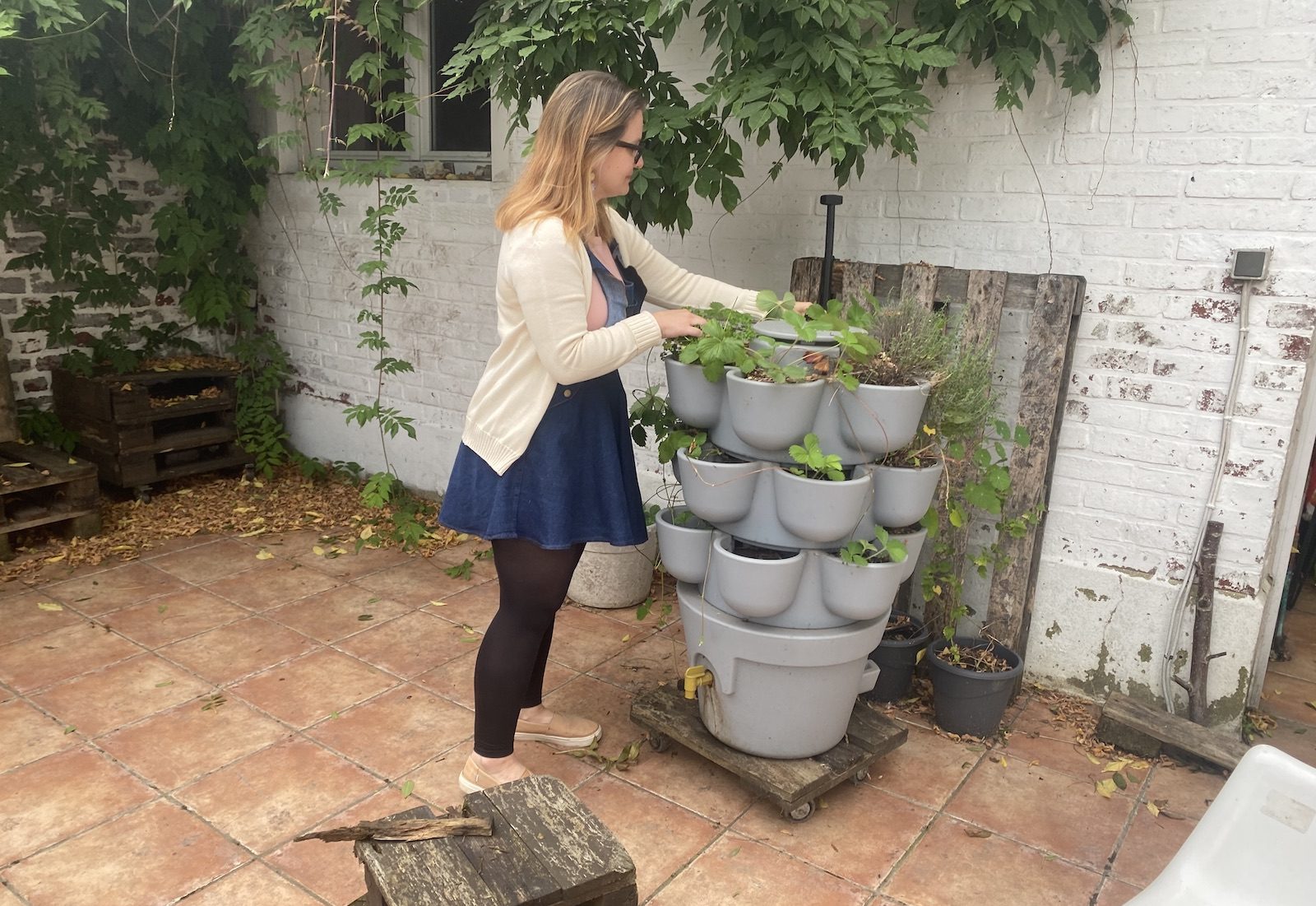
Grist / Joseph Winters

Grist / Joseph Winters
Another die-hard participant is Liliane Otimi, who was already running a Roubaix-based environmental nonprofit called Lueur D’Espoir — “glimmer of hope,” in English — when she enrolled her 10-person household in the city program in 2018. Otimi was passionate about climate change and resource conservation and wanted to embody more of her values in her daily life — especially after a trip back to Togo, the West African country where she grew up. In Lomé, the capital, Otimi said she was “shocked” to see how quickly people went through plastic water bottles and then littered them onto the street. Through Roubaix Zéro Déchet, Otimi learned how to buy cleaning products in bulk, how to do weekly meal prep, and how to plan her grocery shopping so she only buys as much food as her family will be able to use.
“It’s beautiful to live in line with our values,” said Michaela Barnett, a behavioral scientist and founder of KnoxFill, a startup focused on reducing waste, acknowledging Roubaix Zéro Déchet’s allure among a particular demographic.
However, it’s one thing to give “pioneers” like Otimi and Ogborn the tools to live their best zero-waste lives, and quite another to bring all of Roubaix’s residents into the movement. Not everyone will value resource conservation — let alone act on those values — even if you tell them why they should. This is a key reason why behavioral scientists advocate for behavior-change strategies that are more complex than just “tell them” alone. “We generally think of education as a necessary but not sufficient type of intervention,” Wright said. (Incidentally, scientists used to think that an information deficit was the reason for climate inaction. Unfortunately, this has proven not to be the case.)
The 800 families that Roubaix has trained since 2015 likely represent the most easily convincible slice of the city’s population — an estimated 1.8 percent of its 100,000 residents, assuming an average family size of 2.3 people. It’s taken Roubaix nine years to reach this many people, and the rest of its residents will likely be harder to convert.
To be sure, there is more to Roubaix Zéro Déchet than “tell them,” and the city is doing what it can to broaden its reach beyond those most inclined toward zero-waste. For example, the program leans on social influences through advertisements, festivals, and community meetups, and spokespeople like Bea Johnson, the zero-waste social media influencer. (When she was invited to give a talk in Roubaix in 2015, the event was so popular that the city had to change locations three times in order to accommodate more attendees.) Roubaix also promotes the stories of its most successful familles zéro déchet in local, regional, and national media outlets — a strategy that has drawn so much positive press that the city’s communications director said in 2016 that zero-waste had become “my Eiffel Tower.”
What’s more, City Hall has brought zero-waste practices and education into all of Roubaix’s public schools and is trying to nurture a network of zero-waste merchants — including restaurants, grocers, copy shops, and more — that adhere to a set of best practices for waste reduction. The municipal government is also expanding a voluntary community composting program independent from the métropole, and is turning two buildings into zero-waste incubators — essentially, hubs for small and growing businesses that are focused on waste reduction. One of the buildings, a former textile factory, already hosts a company that saves bicycles from being sent to the landfill.
Debrabandere, with Zero-Waste France, said Roubaix is remarkable for what it has accomplished with such limited means. Despite its tight municipal budget and lack of control over waste collection services, she said, the city seems to make every decision with zero-waste in mind. It has even helped launch copycat programs in 26 nearby communities that, altogether, offer more than 300 free zero-waste workshops each year. “Roubaix does things at a level we wouldn’t expect them to do,” Debrabandere told Grist.
Still, she wishes it had the authority to do more.

Some 500 miles south of Roubaix, in a small town called Saint-Denis-de-Pile in the French region of Nouvelle-Aquitaine, Clémentine Derot shimmies into a neon-pink construction vest. She’s about to begin a tour of the headquarters of Smicval, the waste management company that serves 210,000 people across 137 municipalities north of Bordeaux.
Waste reduction is “in our DNA,” Derot says in English, pointing out industrial-sized piles of compost and a warehouse for sorting plastics into bales of recyclable material. There’s also a donation center where residents can drop off toys, dishes, furniture, electronics, and other items they no longer need, and take home other people’s items for free. At one end of the facility, above a chute where dump trucks offload unrecoverable waste, is a massive billboard showing trash building up at the nearby Lapouyade Landfill. “Your trash doesn’t disappear, it’s buried 15 kilometers from here,” the billboard reads, apparently addressing Smicval’s own workers, since the chute isn’t public.
According to Derot, this is all reflective of Smicval’s transformation from a company that simply picks up the trash to a more sophisticated waste prevention and management service, in line with France’s 2021 to 2027 action plan. She describes the status quo waste management model as “totally out of breath” — in need of a complete overhaul — due to escalating concerns over the environment, as well as France’s sharply increasing general tax on polluting activities. In 2019, it cost 18 euros to send a metric ton of waste to the landfill; in 2025, the cost will be 65 euros.
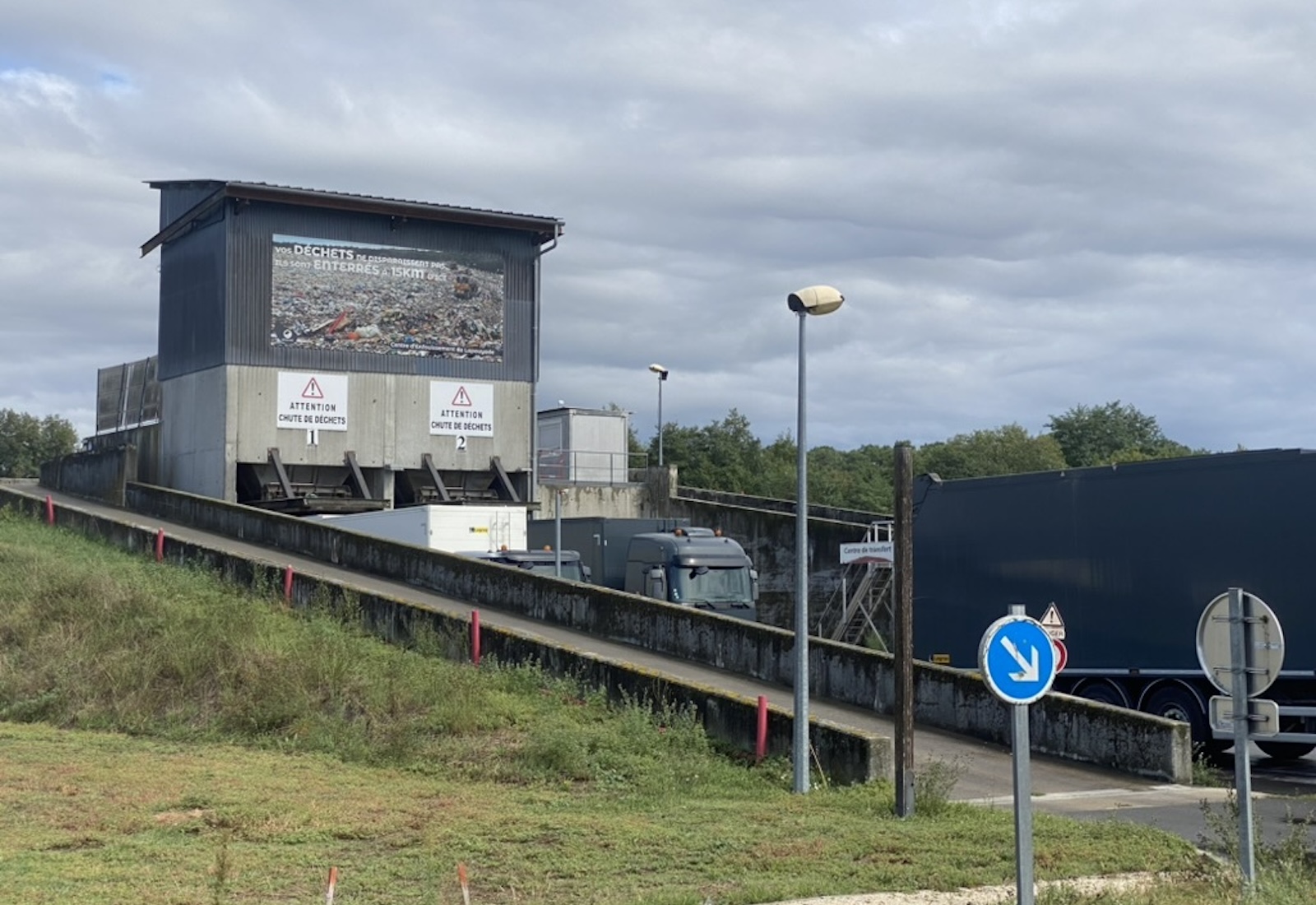
Like Roubaix Zéro Déchet, Smicval envisions a “drastic reduction” in waste generation. But as a regional waste management authority and not a small municipality, Smicval has a very different toolbox at its disposal. Where Roubaix has largely asked residents to opt in to waste reduction, Smicval is able to experiment with more systemic means, like changing the way trash is collected or the way people are charged for disposal services.
The goal, according to Hélène Boisseau, who is overseeing the deployment of Smicval’s new waste management strategies, is to create an environment that is conducive to waste reduction. “We don’t ask for people to become masters in zero-waste,” she said. Rather, “We design the path,” and then guide people along it.
In behavioral science, this is referred to as “contextual change,” where you alter the context in which people make decisions. Instead of merely asking people to do things differently, contextual changes make it easier or more convenient to perform the desired behavior — perhaps by presenting the existing options in a different, more strategic way. Take a middle school lunch line, for example. To get students to eat more vegetables and less pizza, you could either tell them all about the health benefits of broccoli and carrots — or you could move the vegetables to the front of the buffet, so they’re the first things hungry kids see. Many behavioral scientists prefer this type of strategy because it can change lots of people’s behavior all at once — rather than one by one. Plus, it’s better attuned to the unconscious nature of most decision-making.
Smicval’s two biggest strategies revolve around the way waste is collected and how people pay for it. This October, Smicval began a yearslong process of transitioning away from door-to-door waste collection to a model in which people travel to a centralized location, likely within a few blocks’ distance, to drop off their trash. Large bins for trash and recycling — one for every 150 residents — will be openable using a special key card. Community compost bins will be distributed at a rate of one per 80 residents.
According to Boisseau, this model will encourage people to reduce waste simply because it’s inconvenient to haul heavy trash bags down the block. But the longer-term objective is to use those key cards to implement a pay-as-you-throw scheme, in which people pay for waste disposal based on the amount of trash they want to dispose of. Rather than funding Smicval through taxes, families would directly pay the company for different tiers of service, represented by the number of times their key cards will allow them to open the garbage receptacles. The more openings, the more expensive the service, so that people no longer think of waste collection as a limitless public service.
Boisseau compared it to the way people get their electricity bills. Because they can see the charge fluctuating based on their consumption habits, they’ll be incentivized to waste less in order to pay less. “The best way of making sure that people are very concerned with what they put in a bin or a container is to pay for it individually instead of [through] taxes,” she said. Indeed, this principle has been put to use in thousands of towns worldwide, from Berkeley, California, to Austin, Texas, some of whose pay-as-you-throw policies have contributed to municipal solid waste reductions of 50 percent or more. Waste experts say these policies are some of local governments’ “most effective tools for reducing waste.”
Smicval is still sorting out the details of the new system, which is unlikely to be fully adopted until at least 2027 or 2028. In the meantime, Smicval expects to see significant cost savings from fewer and shorter garbage truck routes, which it will use to fund some of its other waste-reduction projects: things like a pilot program for reusable diapers, political advocacy for a bottle deposit bill, a 10,000-signature petition asking grocery stores to eliminate unnecessary plastic packaging, and a Roubaix-esque “zero-waste cities” program, in which Smicval distributes reusable cleaning products and informational pamphlets to the residents of participating municipalities.
Barnett, the behavioral scientist, applauded Smicval for using a broad range of strategies to encourage zero-waste. “They are attacking this from different angles,” she said.
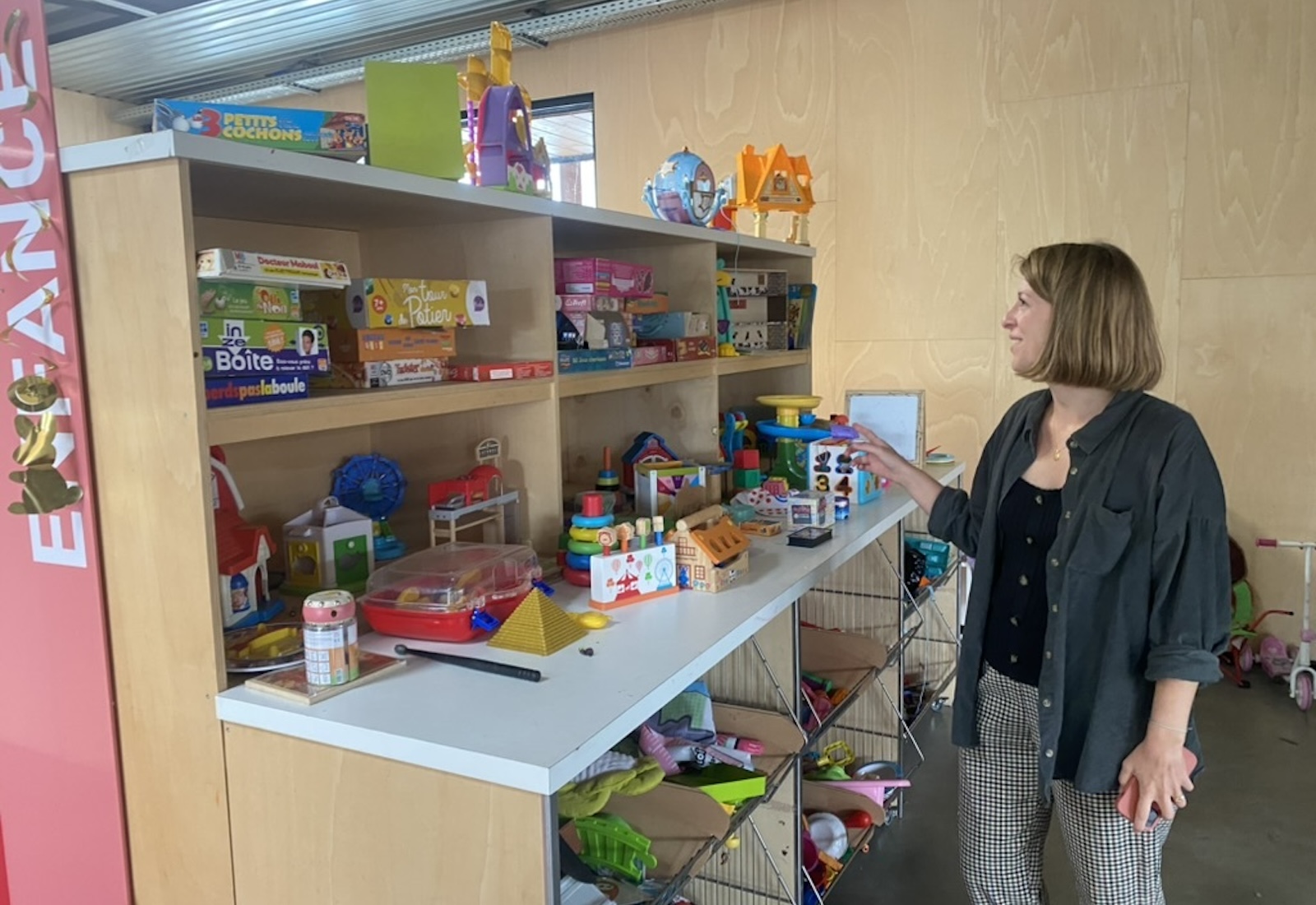
Grist / Joseph Winters
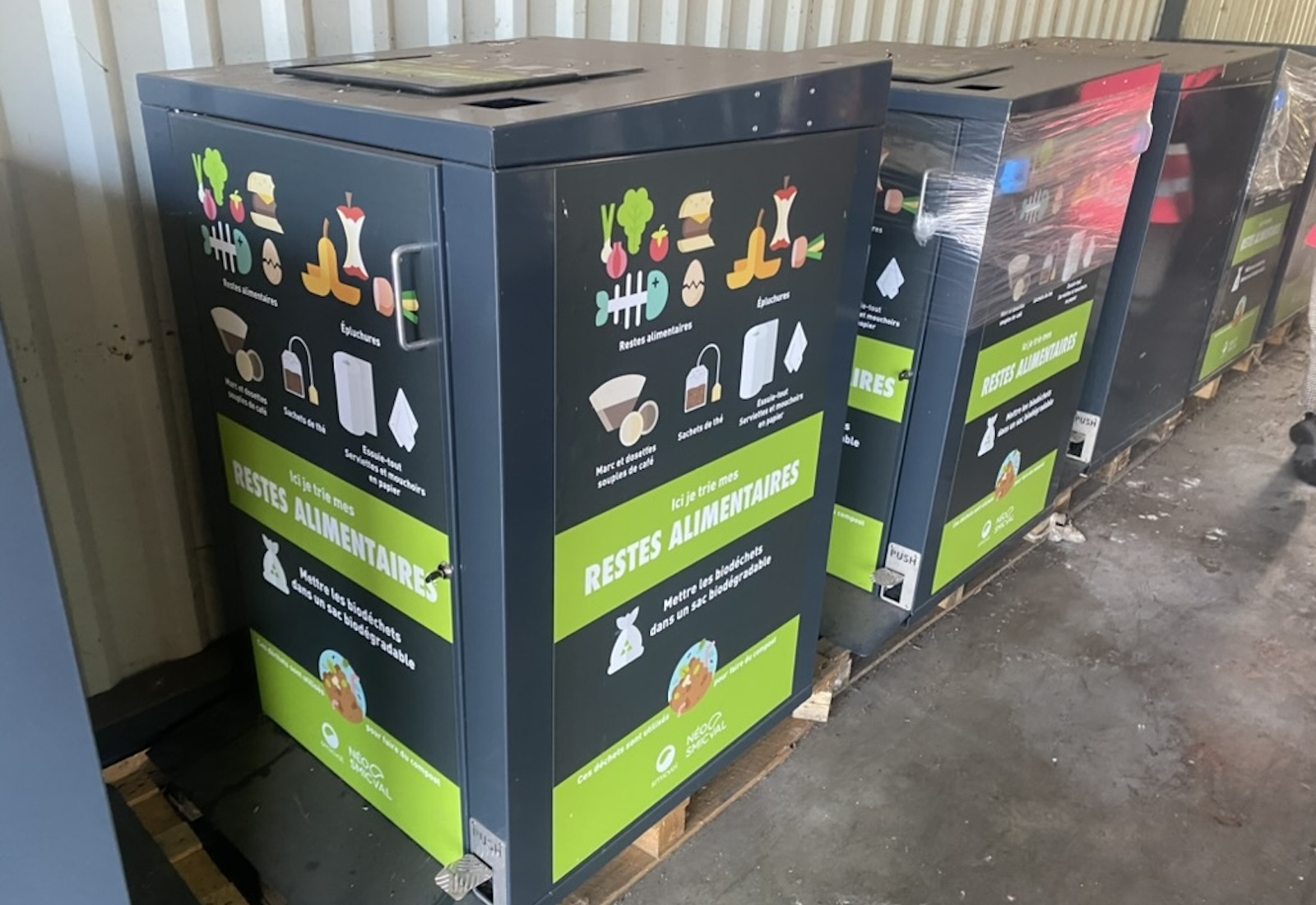
Grist / Joseph Winters
Still, she and the other behavioral scientists Grist spoke with noted the risk of backfire. Although small hassles can be “quite impactful” in catalyzing behavior change, Wright, with Ideas42, said they can also go too far and encourage noncompliance. For something like centralized waste collection or a pay-as-you-throw system, this could mean people dumping their waste illegally or finding a workaround that allows them to open the trash receptacles more often than what they’re paying for. Wright said the program’s success will hinge on specific design considerations, like the way direct invoicing is presented to customers.
If Smicval’s waste-reduction policies are particularly unpopular, Boisseau said it’s even possible that a conservative slate of candidates could be elected to the organization’s board and walk back or weaken its environmental initiatives. Already, Smicval has gained critics who say that centralized waste collection is too onerous. These include the mayor of Libourne, the largest city in Smicval’s territory, who at a meeting last year predicted that the organization’s strategy would turn Libourne into “a trash can,” with people dumping garbage on the streets. If these critics were to mobilize the population against Smicval’s agenda, Boisseau said, “we know they would fight hard.”
A similar problem is unfolding on a national scale, as France prepares to meet a January 1 deadline to equip all of its households with composting receptacles. Observers are afraid that the rollout will be a “nightmare,” and that “a lot of people don’t want to take part.”
Smicval is aware of the obstacles it faces and has been proactive in its efforts to preempt or overcome them. As it slowly transitions to centralized waste collection, for example, the organization is going city by city and saving Libourne for last, hoping that a successful rollout in some of its more supportive municipalities will assuage fears in Libourne. To avoid backlash, it has also consulted with individual citizens to hear their concerns, act on their feedback, and — in some cases — design project proposals to be presented to Smicval’s board.
We try to work with citizens, rather than for them, Derot said. “They know what they need.”
Despite the many overlapping benefits of zero-waste, the movement sometimes gets a bad rap because of its focus on consumers, rather than manufacturers. Why ask individuals to shop in the bulk aisle or pay more for trash disposal if the petrochemical industry is just going to more than triple plastic production by 2050 anyway?
“We are kind of tired of everyone saying it’s on the citizens’ part” to reduce waste, Debrabandere, with Zero Waste France, told Grist. She and other environmental advocates agree there’s an urgent need for waste-reduction policies that are even more aggressive than France’s current ones — for example, mandatory waste sorting in all restaurants, as well as more stringent requirements for the use of post-consumer recycled content and a faster phase-out of single-use plastics.
But the zero-waste policies of advocates’ dreams will require even more intensive behavior shifts than those that Roubaix and Smicval are trying to navigate. For example, imagine a world where France — or any developed country, for that matter — bans products from being sold in disposable containers. This would require people to deal with new enforcement infrastructure at the local level, to shop at new businesses that can accommodate reusable and refillable product systems, and to lug around their own jars and jugs and bottles.
There are many, many other routine habits that consumers will have to dispense with or fundamentally alter in order to create a zero-waste economy, like buying plastic toothpaste tubes and getting takeout in throwaway packaging. The work that Roubaix and Smicval are doing in France is an early part of that process. By figuring out how best to engage their citizens on behavioral change, they are helping to create a smoother path toward the deeper, more radical changes that advocates hope are coming in the near future.
Barnett said there’s also value in the work Roubaix and Smicval are doing to understand zero-waste behavior in their respective regions. Behavioral scientists used to think humans could be characterized by a set of “universal truths,” Barnett said. But that’s less the case now: “We need to go in there and figure out more about the environmental context, the people that are there,” she explained.
Meanwhile, as Roubaix and Smicval continue to try to win over new residents, they both have the benefit of an unusually enthusiastic army of supporters. Nieuwjaer isn’t the only zero-waste devotee who’s all too eager to proselytize about the simple joys of reducing waste. Chloé Audubert, who has spent the past two years working at one of Smicval’s sorting centers, said she loves helping people sort and limit their déchets enfouis — their waste destined for the landfill. And Otimi, the Roubaix resident who leads a family of 10, could barely find the words in English to express what Roubaix Zéro Déchet has meant to her. “This program changed my life,” she finally said.
This story was originally published by Grist with the headline In France, zero-waste experiments tackle a tough problem: People’s habits on Dec 6, 2023.


